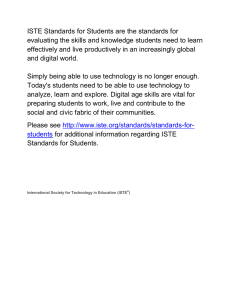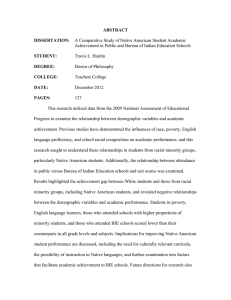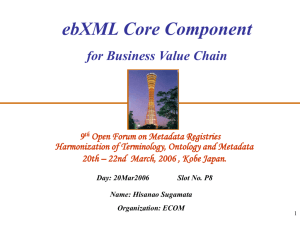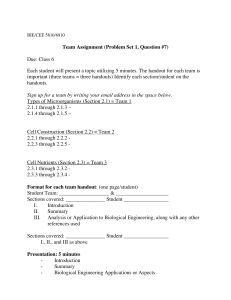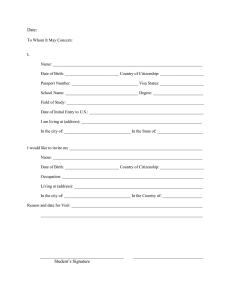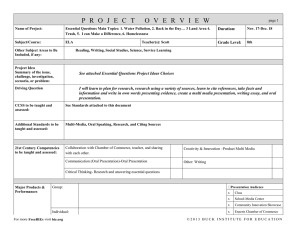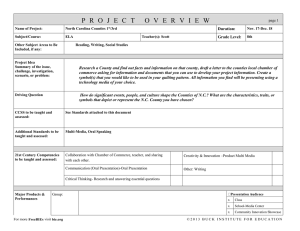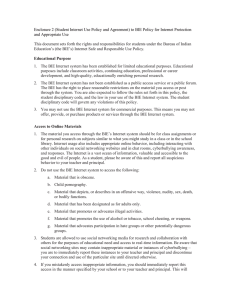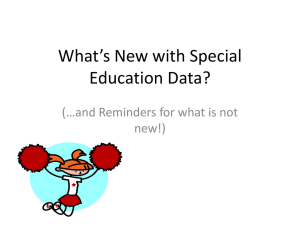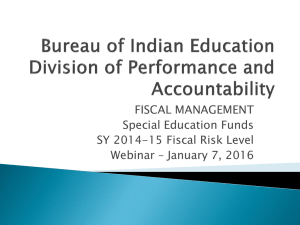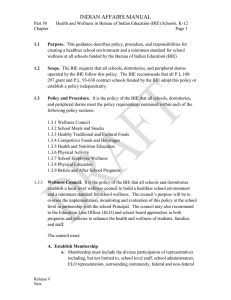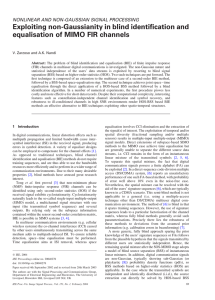BIE National Educational Technology Standards
advertisement
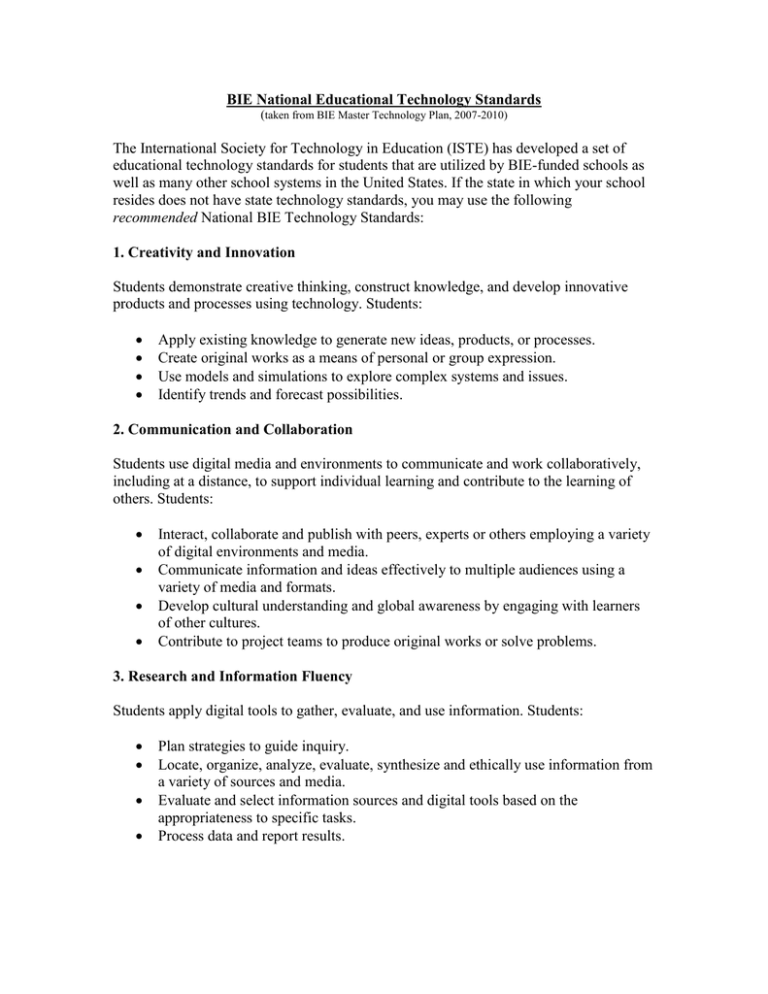
BIE National Educational Technology Standards (taken from BIE Master Technology Plan, 2007-2010) The International Society for Technology in Education (ISTE) has developed a set of educational technology standards for students that are utilized by BIE-funded schools as well as many other school systems in the United States. If the state in which your school resides does not have state technology standards, you may use the following recommended National BIE Technology Standards: 1. Creativity and Innovation Students demonstrate creative thinking, construct knowledge, and develop innovative products and processes using technology. Students: Apply existing knowledge to generate new ideas, products, or processes. Create original works as a means of personal or group expression. Use models and simulations to explore complex systems and issues. Identify trends and forecast possibilities. 2. Communication and Collaboration Students use digital media and environments to communicate and work collaboratively, including at a distance, to support individual learning and contribute to the learning of others. Students: Interact, collaborate and publish with peers, experts or others employing a variety of digital environments and media. Communicate information and ideas effectively to multiple audiences using a variety of media and formats. Develop cultural understanding and global awareness by engaging with learners of other cultures. Contribute to project teams to produce original works or solve problems. 3. Research and Information Fluency Students apply digital tools to gather, evaluate, and use information. Students: Plan strategies to guide inquiry. Locate, organize, analyze, evaluate, synthesize and ethically use information from a variety of sources and media. Evaluate and select information sources and digital tools based on the appropriateness to specific tasks. Process data and report results. 4. Critical Thinking, Problem-Solving & Decision-Making Students use critical thinking skills to plan and conduct research, manage projects, solve problems and make informed decisions using appropriate digital tools and resources. Students: Identify and define authentic problems and significant questions for investigation. Plan and manage activities to develop a solution or complete a project. Collect and analyze data to identify solutions and/or make informed decisions. Use multiple processes and diverse perspectives to explore alternate solutions. 5. Digital Citizenship Students understand human, cultural and societal issues related to technology and practice legal and ethical behavior. Students: Advocate and practice safe, legal and responsible use of information and technology. Exhibit a positive attitude towards using technology that supports collaboration, learning, and productivity. Demonstrate personal responsibility for lifelong learning. Exhibit leadership for digital citizenship. 6. Technology Operations and Concepts Students demonstrate a sound understanding of technology concepts, systems and operations. Students: Understand and use technology systems. Select and use applications effectively and productively. Troubleshoot systems and applications. Transfer current knowledge to learning of new technologies.
